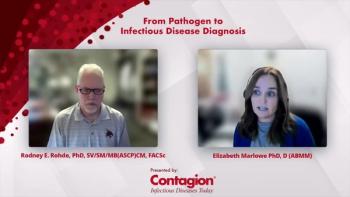
Higher Antibiotic Use & C. diff Rates Found After Sepsis Program Implementation
A recent study found that a sepsis care bundle program implemented in The Mount Sinai Hospital in New York coincided with an increase in antibiotic prescriptions and higher rates of Clostridium difficile infections.
A new study conducted by researchers from New York’s Icahn School of Medicine at Mount Sinai found that efforts to diagnose and treat sepsis in hospitals may be leading to unintended consequences, including the overuse of antibiotics and more cases of Clostridium difficile infections.
In a recent
The investigators found that there was an increase in antibiotic use with the implementation of the sepsis program, with the highest rate of antibiotic use of 50.4 days of therapy per 1,000 patient days occurring directly after the implementation of the program. In addition, while rates of hospital-onset C. difficile had been declining prior to the sepsis care program, with -1.4 such infections per 10,000 patient days per month, the rate rose to 10.8 infections per 10,000 patient days per month following the program’s implementation. The researchers suggested that the increase in antibiotic administration could be related to a rise in sepsis cases, but possibly due to changes in documentation and diagnosis patterns, as the program may have identified patients with sepsis earlier leading to increased doses of antibiotics.
“Integrated sepsis care streamlines how treatment is delivered. Yet as our research indicates, providers face the tough task of addressing how to deliver timely sepsis care, while mitigating potential unintended consequences such as an increase in healthcare facility-onset Clostridium difficile infection that may be linked to increased use of broad-spectrum antibiotics,” said the study’s lead researcher Jashvant Poeran, MD, PhD, in a
Despite its unintended consequences, the study authors point out that the sepsis program has demonstrated positive improvements overall in sepsis-related outcomes, and that they could not confirm causality between the program and the antibiotic use and C. difficile rates observed during the study period.
Newsletter
Stay ahead of emerging infectious disease threats with expert insights and breaking research. Subscribe now to get updates delivered straight to your inbox.

















































































































































































































































































